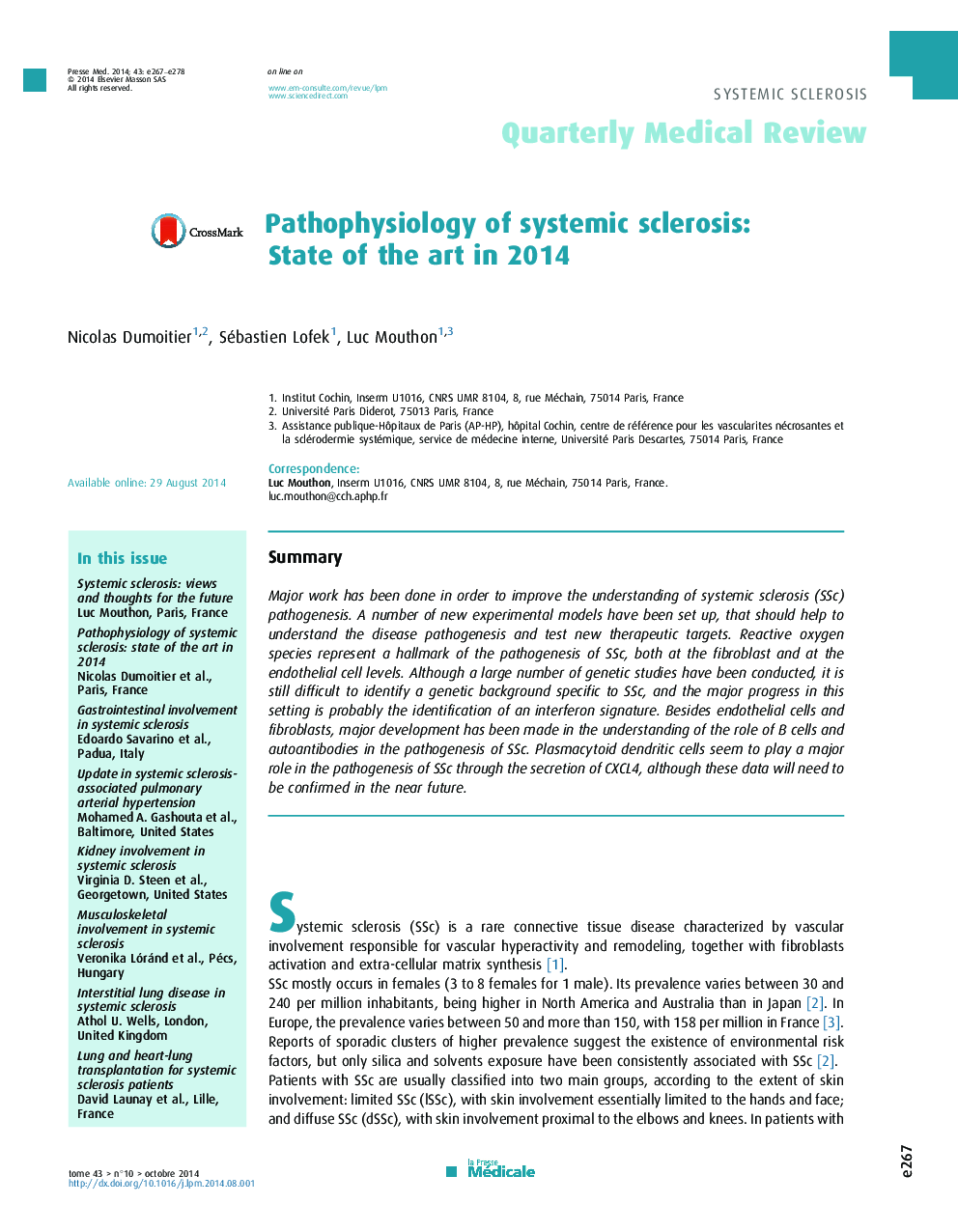| کد مقاله | کد نشریه | سال انتشار | مقاله انگلیسی | نسخه تمام متن |
|---|---|---|---|---|
| 3819738 | 1246446 | 2014 | 12 صفحه PDF | دانلود رایگان |
SummaryMajor work has been done in order to improve the understanding of systemic sclerosis (SSc) pathogenesis. A number of new experimental models have been set up, that should help to understand the disease pathogenesis and test new therapeutic targets. Reactive oxygen species represent a hallmark of the pathogenesis of SSc, both at the fibroblast and at the endothelial cell levels. Although a large number of genetic studies have been conducted, it is still difficult to identify a genetic background specific to SSc, and the major progress in this setting is probably the identification of an interferon signature. Besides endothelial cells and fibroblasts, major development has been made in the understanding of the role of B cells and autoantibodies in the pathogenesis of SSc. Plasmacytoid dendritic cells seem to play a major role in the pathogenesis of SSc through the secretion of CXCL4, although these data will need to be confirmed in the near future.
Journal: La Presse Médicale - Volume 43, Issue 10, Part 2, October 2014, Pages e267–e278
